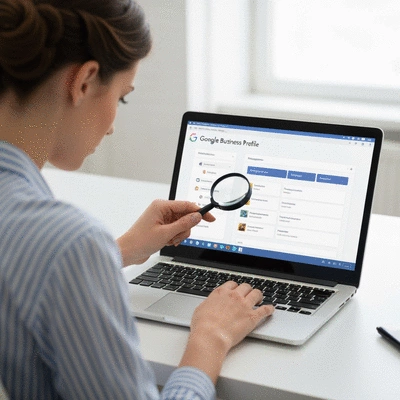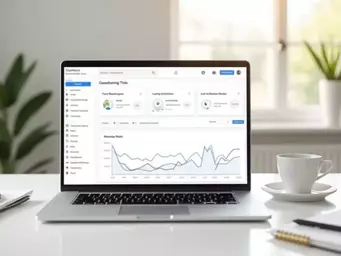Primary Categories
- Core Business: Defines your main service/product.
- High Impact: Most crucial for relevant searches.
- Visibility Driver: Directly influences appearance in search.
- Focused Search: Helps customers find your primary offering.
What if the right category could elevate your business visibility to new heights? Understanding Google Business Profile (GBP) categories is a game changer for local SEO. These categories are more than just labels; they are the key to connecting with customers actively searching for your services. Let's delve into the essential insights you can gain from optimizing your GBP categories.
This visual highlights the distinct roles of primary and secondary categories in optimizing your Google Business Profile (GBP) for local search visibility.
When diving into the world of local SEO, Google Business Profile (GBP) categories are a crucial piece of the puzzle. Think of these categories as the labels that help potential customers understand what your business does. They are essential for ensuring that your business shows up in relevant local searches, connecting you with customers actively seeking your products or services.
Every business owner should take the time to understand the significance of these categories. An optimized Google Business Profile can make a significant difference in your visibility. Let’s explore what these categories are and their impact on your local search rankings!
Google Business Profile categories are predefined classifications that represent your business's primary offerings. These categories help Google understand your business better, enabling it to display your profile to the right users searching for relevant services nearby. For instance, if you run a bakery, selecting “Bakery” as your primary category ensures that local customers looking for freshly baked goods can easily find you. To truly master your online presence, it's essential to master Google Business Profiles by understanding all their features.
As the owner of Local SEO Solutions Australia, I've seen firsthand how well-chosen categories can transform a business’s online presence. Choosing the right categories not only helps potential customers find you but also enhances your credibility as a local service provider.
GBP categories play a pivotal role in determining where your business ranks in local search results. Google uses these categories as one of the factors in its algorithm to decide which businesses to display for specific search queries. The more closely your categories align with what users are searching for, the higher your chances of appearing in the coveted local pack.
It’s important to regularly review and adjust your categories based on changing market trends and customer needs. At Local SEO Solutions Australia, I often advise clients to keep an eye on their competitors and industry shifts to ensure their categories remain competitive and relevant.
Having a well-optimized Google Business Profile not only improves your visibility within search results but also enhances your overall online reputation. When customers search for businesses like yours, a complete profile, including accurate categories, is more likely to catch their attention.
To maximize your business's visibility, it’s crucial to use rich content alongside well-chosen categories. By integrating high-quality images and actively engaging with customer feedback, you can create a compelling presence that stands out in local searches. Remember, a strong Google Business Profile is your online storefront—make it inviting! For more tips on how to improve your online presence, learn how to optimize your Google Business Profile effectively.
Understanding the distinction between primary and secondary categories is vital for optimizing your Google Business Profile effectively. Your primary category should represent your main business offering, while secondary categories can expand on other services you provide. Let’s delve into their importance and selection criteria!
Your primary category is the most crucial element of your GBP, as it directly impacts your visibility for relevant searches. Selecting the right primary category is about accurately reflecting what your business primarily offers to customers. Here are some important points to consider:
For instance, if you run a fitness center, selecting “Gym” as your primary category makes sense. However, if your gym specializes in yoga and personal training, those can be added as secondary categories to enhance your profile further.
Secondary categories are just as important as your primary one, as they provide customers with additional context about the services you offer. They can help capture a broader audience searching for various services associated with your primary category. Here’s why they matter:
At Local SEO Solutions Australia, we often guide our clients to evaluate their offerings and consider adding relevant secondary categories to their Google Business Profiles. This strategy can lead to increased visibility and more potential customers finding their businesses online.
Choosing the right industry-specific categories can be a game-changer for your local SEO strategy. Different industries have unique categories that can be leveraged to your advantage. Here are some strategies for selecting the right categories:
By aligning your categories with industry standards and trends, you can position your business effectively in local searches. As someone passionate about empowering local businesses, I always emphasize the importance of staying current with the latest local SEO practices and category options! For further reading on refining your local presence, consider exploring strategies for boosting Google Business Profile visibility.
When selecting your Google Business Profile categories, consider using tools like Google's Keyword Planner to identify popular search terms related to your business. This can guide you in choosing categories that not only reflect your services accurately but also align with what potential customers are actively searching for.
When it comes to your Google Business Profile (GBP), understanding the impact of your chosen categories is vital. Not only do these categories define how your business is represented in local searches, but they also play a pivotal role in attracting the right customers. In this section, we’ll explore how to measure the effectiveness of your categories, highlight success stories, and delve into the metrics available through Google Insights.
To truly gauge your GBP categories' performance, we must look at specific key metrics. These metrics can tell you how well your business is resonating with local audiences and where there might be room for improvement.
Tracking the performance of your Google Business Profile categories involves several important metrics that can provide insights into customer behavior and engagement:
Measuring these metrics regularly helps you understand the effectiveness of your category choices. If you notice low performance in any area, it might be time to re-evaluate your categories. This can lead to better-targeted traffic and ultimately drive more foot traffic and sales!
One of the best ways to understand the impact of category optimization is through real-life examples. At Local SEO Solutions Australia, we’ve had the pleasure of working with several local businesses that have transformed their search visibility by optimizing their GBP categories. Here are a couple of success stories:
These instances illustrate how effective category optimization can lead to measurable business growth. By aligning your categories with what your ideal customers are searching for, you can unlock new avenues for engagement.
Utilizing Google Insights is essential for any business wanting to enhance its GBP performance. This tool provides valuable data about how customers interact with your profile. Key engagement metrics to monitor include:
Keeping an eye on these metrics will not only help you evaluate the effectiveness of your categories but also provide insights into customer preferences and behaviors. Adjusting your strategy based on this data can enhance your local presence and effectively connect with your target audience.
As we move forward, it’s essential to recognize that different industries might require tailored strategies for category selection. By understanding the specific needs of your industry, you can better align your GBP categories to attract your ideal customers.



 What if the right category could elevate your business visibility to new heights? Understanding Goog
What if the right category could elevate your business visibility to new heights? Understanding Goog
 Your Google Business Profile (GBP) is your digital storefront, a vital tool that significantly enhan
Your Google Business Profile (GBP) is your digital storefront, a vital tool that significantly enhan
 What if a single review could either make or break your business’s reputation? Local reviews are m
What if a single review could either make or break your business’s reputation? Local reviews are m
 What if I told you that a simple, yet overlooked, strategy could significantly enhance your business
What if I told you that a simple, yet overlooked, strategy could significantly enhance your business